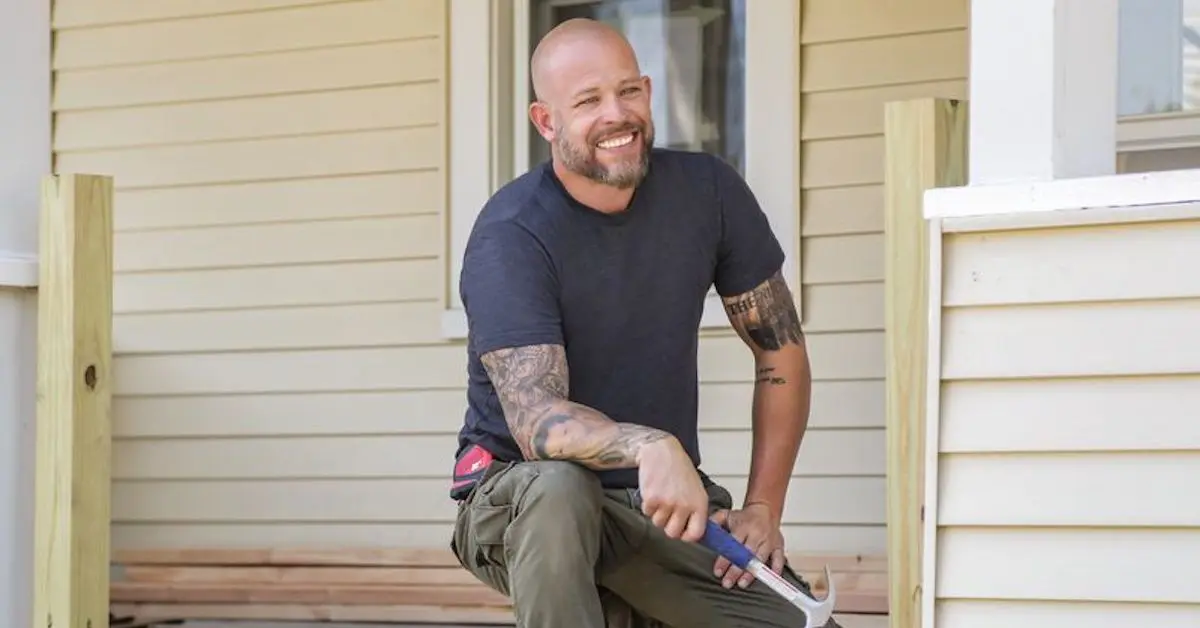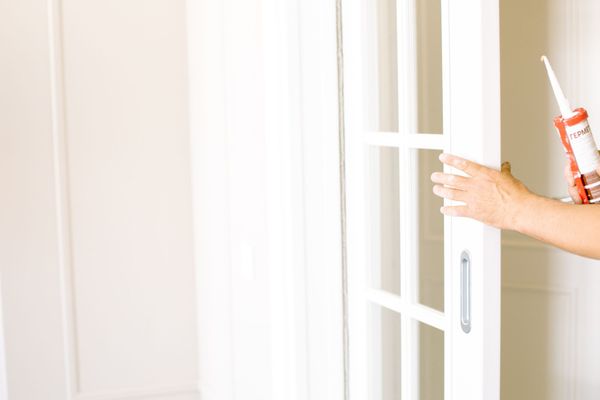A home inspection is a crucial step in the real estate process. Certified home inspectors conduct a thorough examination of a property, ensuring buyers receive a comprehensive home inspection report that highlights any potential issues.
Using a house inspection checklist can reveal a number of issues you’ll be glad you found before you’ve made any commitments. Some of them might be small, while others could be big enough to decrease a home's value or be a deal breaker for you.
Here’s our comprehensive, 48-point home inspection checklist for your own personal home inspection process so you can make sure buying the home of your dreams doesn’t turn out to be a nightmare.
Home Inspection Checklist
A professional home inspection can uncover major repairs or deal breakers, such as mold, termites, or structural damage. Although a seller's disclosure statement should mention known defects, a home inspection provides an unbiased assessment of the property's condition, revealing mandatory repairs when buying a new home.
General Items to Inspect in a Home
- Doors: Open and close every single one and check all of the locks. Make sure they don’t get stuck and that they stay closed. Have they marked up the floor from opening unevenly?
- Floors: Check every room for squeaky, loose, or bouncy boards. Make sure floors are not uneven.
- Ceilings and Walls: Look for mold or water damage. Check for holes. If you see any spots on the ceilings, this could mean there's an active leak which could be costly in the future if not fixed immediately.
- Windows: Open and close every window to see if they stick. Check locks and look for faded or broken panes. Look for water stains beneath windows which may indicate loose sills.
- Trim: Look for damaged, broken, or missing trim. This includes door and window trim, as well as baseboards.
- Stairs: Check every staircase in the home to see if they are secure and don’t have significant give when they are walked on. Check security of railings and spindles.
- Lights, Fans and Fixtures: Test every switch in the home. If one doesn’t seem to work, make sure it’s not just a burned out lightbulb.
- Electrical Outlets: Test each one with a voltage tester. Especially in older homes, it's important to make sure all of the outlets are up to code and grounded to protect your appliances, family and home from electrical shock.
- Smoke Detectors & Carbon Monoxide Detectors: Test each to ensure they are operating properly.
Major Systems to Inspect
- Electrical Panel: You'll want to evaluate the electrical panel to ensure there are no loose or old electrical wires and ensure the electrical systems are less than 50 years old.
- HVAC: Check the exterior condenser and the air handler. A heating and air system that is older than 20 years old may need to be replaced.
- Water Heater: Check the condition and age of the unit. A water heater unit that is older than 12 years old may need to be replaced.
Items to Inspect in a Kitchen
- Cabinets/Drawers: Open all cabinets and drawers to see if they stick and that they are able to open and close properly. Check interiors for storage space and signs of pests or rodents.
- Oven: Make sure the oven works and heats properly. Check the door and inspect inside for signs of neglect.
- Stove: If electric, test each burner to see they each turn on. If the stovetop is gas, turn each burner on individually and then turn them all on at once to make sure they light.
- Refrigerator: Check the doors of the fridge and freezer, the ice maker and water dispenser if applicable.
- Dishwasher: Turn on the dishwasher and let it run for a cycle. Check the door and inspect the inside for signs of neglect.
- Sink: Run water, check water pressure, and make sure it drains.
- Garbage Disposal: Run the garbage disposal along with the sink to make sure it works properly.
- Microwave: Turn it on to see if it works. Check displays and look at the inside to see the condition.
- Hood: Make sure the fan and light work. Look for grease buildup beneath the hood.
- Countertops: Check for cracks, chips, and other damage with the countertops. Make sure they’re secure and sealed in place.
- Tile: If the kitchen has a tile backsplash or tile countertop, check for any cracks and to ensure that the tiles are secured in place.
- Windows: Make sure any kitchen windows open and close smoothly.
Items to Inspect in the Bathroom(s)
- Plumbing: Check for clogs in all drains and leaks in all faucets. Run the water to listen to the pipes and look out for any water.
- Toilet: Make sure the toilet is securely fastened to the floor. Flush the toilet, and check for any leaks around the base.
- Tub: Check for cracks and chips in any tubs. Look for leaking around the faucet and run the water to check that the temperature changes appropriately.
- Shower: Make sure the shower is properly sealed with caulking and that the shower head is functional.
- Vents: Make sure the bathroom vents are okay by seeing if the fans work properly and are not excessively noisy.
- Vanity: Check the mirror and inside cabinets on the bathroom vanity too make sure they are secured and aren't rusted or dirty.
- Floor: Look for cracks and water damage in the floor. If found, this could be a sign of water damage or active leaks in the bathroom.
- Septic Cleaning: Empty septic tanks regularly to keep them operational. But if you have a septic tank, you should call a septic and grease tank cleaning service for the job.
Items to Inspect in Bedrooms, Living Room, Dining Room
- Doors: Check knobs and make sure doors work properly.
- Walls: Check for damage on the walls that may need to be repaired such as cracks or holes.
- Floors: Check for damage on hardwood floors, deteriorated laminate/vinyl or excessive staining that may require carpet cleaning.
- Windows: Open and close them. Check the locks to make sure they work properly.
- Closets: Consider storage space in the closets. Check stability of any shelving and see if the doors open and close properly.
Items to Inspect in Basement
- Walls: Check for signs of cracking in the basement walls. Significant cracking can be a major cause for concern in a basement as it may signify issues with the structure of the home.
- Piping: Check for any leaks in the pipes in the basement.
- Furnace: Inquire about the installation date of the furnace.
- Water Heater: Inquire about the installation date to determine the age of the hot water heater. Look for signs of leakage. While a leaky water tank is an easy fix, it can cause significant damage if left alone.
- Odors: Strong, musty smells in the basement could indicate issues with mold or mildew.
Items to Inspect on the Outside of a Home
- Lights: Check to see if all of the exterior lights turn on.
- Outlets: Test each outlet.
- Sprinkler System: Run the sprinkler system to see if it works.
- Fencing: Check the fence for damage and make sure it's secure.
- Roof: Check the roof for any loose shingles or damage. A professional home inspector will be able to determine the age of the roof and give notice if it will need to be repaired or replaced soon. If you're home is set in a good location, consider adding solar panels during this time.
- Siding: Is it dirty, worn, or in need of replacing?
- Garage Door: Make sure the garage opens and closes properly.
- Grass/Trees/Shrubbery: What condition are they in? Will you need to invest heavily in landscaping once you move in?
- Termite Inspection: Consider hiring a pro for a termite inspection or termite clearance letter (wood infestation report).
- Septic Tank: If the home has a septic tank, consider a septic inspection.
Work With a Realtor Who Can Walk You Through A Home Inspection Checklist
Real estate agents often recommend including a home inspection contingency in the real estate contract, protecting buyers from purchasing a property with undisclosed problems. This clause allows buyers to negotiate repairs or walk away from the deal if the inspection report reveals significant issues during due diligence.
If you do discover issues needing to be repaired, your next step would be to hire a handyman or other home service pros using websites like Thumbtack or Angi.
At SimpleShowing, a licensed real estate agent can help you identify common issues early, walk you through the entire home buying process and give you a commission refund that helps you pay for repairs or closing costs.
To get started, contact us or book a tour of any home.






